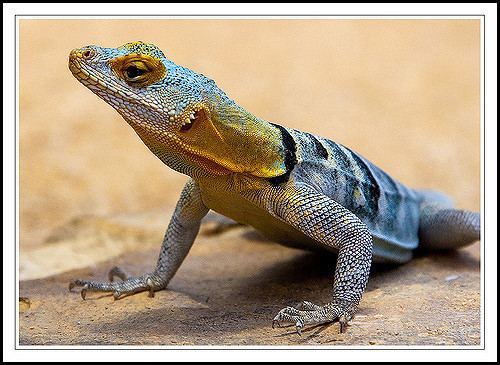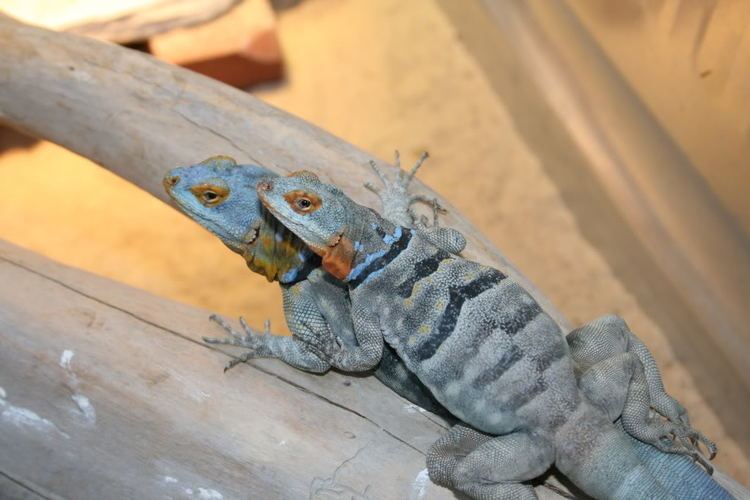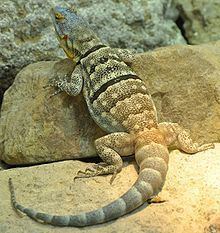Class Reptilia Family Phrynosomatidae Scientific name Petrosaurus thalassinus Rank Species | Subphylum Vertebrata Suborder Lacertilia Genus Petrosaurus Phylum Chordata Order Scaled reptiles | |
 | ||
Similar California rock lizard, Banded rock lizard, Scaled reptiles, Phrynosomatidae, Crotaphytus | ||
Baja blue rock lizard
The Baja blue rock lizard (Petrosaurus thalassinus) is a species of large, diurnal phrynosomatid lizard.
Contents
- Baja blue rock lizard
- Description
- Behavior
- Diet
- Taxonomy
- Life History
- Habitat
- Geographic range
- Conservation
- References
Baja blue rock lizard
Description

It reaches up to 45 cm (18 in) long including the tail, and has a flattened body with small, smooth, granular scales and slightly keeled scales near the tail. The head is bluish with red to orange colors around the eyes, yellow neck with blue spots and streaks. The back of the tail is gray blue with darker cross bars. The coloration intensifies during the breeding season in both sexes.
Behavior

It prefers temperatures in excess of 90 °F and basks in direct sunlight on desert rocks. A very wary species, its flattened body allows it to quickly retreat into rock crevices to escape predators as well as inclement weather conditions. When threatened, it can extend a skin flap along its throat. Like many lizards, it is able to drop its tail when caught.
Diet

It feeds on various insects, small lizards, blossoms, leaves, seeds, and small fruit. Occasional incidents of cannibalism on smaller individuals have been observed.
Taxonomy
Two subspecies are recognized within P. thalassinus; P. t. thalassinus inhabits the Cape region, and P. t. repens ranges north of the isthmus of La Paz. P. t. repens differs by having a thin, black, postorbital stripe; one row of scales between the nasal and the supralabials as opposed to two, and reaching a maximum snout-to-vent length of 111 mm as opposed to 162 mm. Genetic studies indicate all populations within P. thalassinus, including the two subspecies, show only low levels of genetic divergence, indicative of high rates of gene flow. In contrast, P. thalassinus is strongly differentiated from its sister species P. mearnsi.
Life History
Breeding takes place in the spring. 20 to 30 eggs are laid in late spring and summer, and hatchlings appear after 85 to 88 days in summer and early fall. Sexual maturity is reached after about 2 years with a life expectancy of 20 years.
Habitat
P. thalassinus is most often found in the immediate vicinity of rocky canyons, boulder-strewn hillsides and arroyo bottoms and sea-side cliffs. These lizards appear to be particularly common on rocks near large trees or other vegetation, and rarely seen in areas where vegetation is non-existent.
Geographic range
It is found in the Sierra la Laguna (and its associated ranges) and Sierra la Trinidad of the Cape region of Baja California Sur, as well as on Islas Espiritu Santo and Partida Sur in the Gulf. Elevational distribution from sea level to 2,020 meters in the Sierra la Laguna.
Conservation
This species is locally abundant and occurs on several protected islands. It is currently in no need of special protection. However, its small range may make it vulnerable to disturbance.
